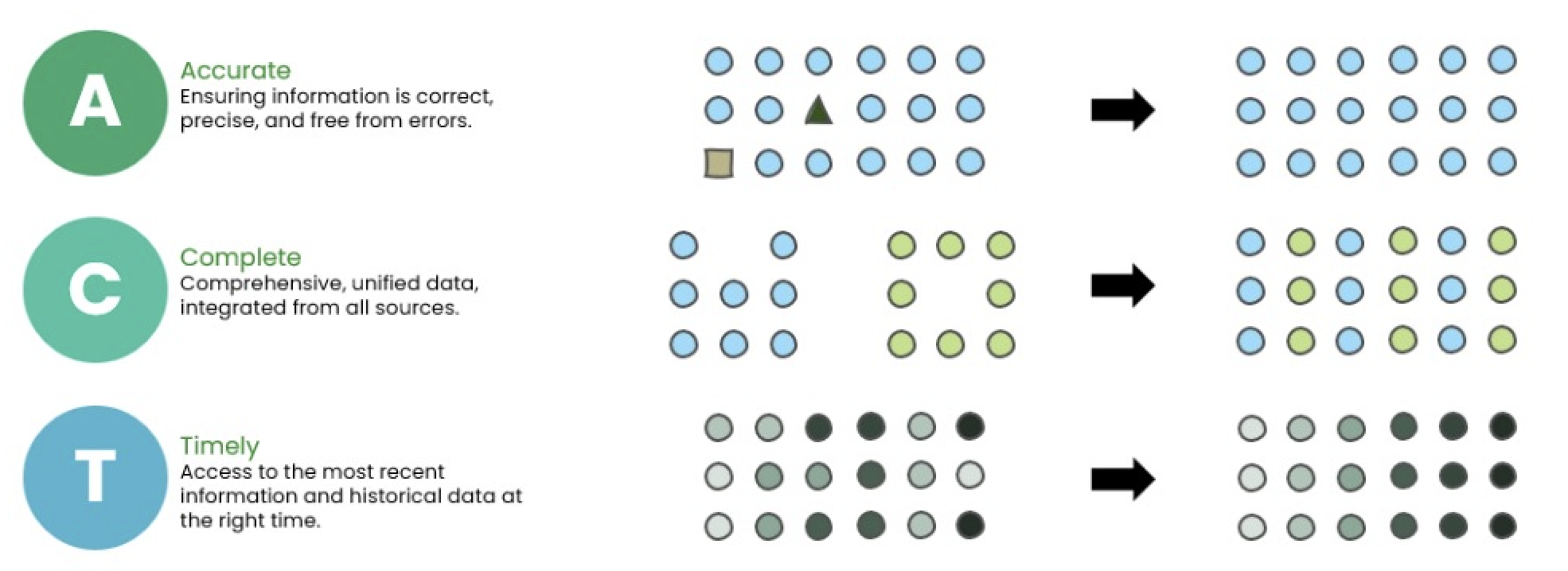In my previous article, I highlighted the importance of clean data as the foundation for AI maturity. As organisations increasingly turn to AI-driven decision-making, dashboards play a pivotal role as both the engine and the mirror for AI’s capabilities. Dashboards compile and visualise data that feeds into AI models, while also serving as the first point where the quality of AI-driven insights becomes apparent.
Even the most advanced AI models, including those powered by LLMs, struggle with basic data analysis if the underlying data is unclean. LLMs are designed to interpret and generate language, but they rely on structured, accurate, and consistent datasets to deliver meaningful insights. When HR data is fragmented, incomplete, or outdated, the inaccuracies compound, leading to flawed AI outputs, including skewed predictions, irrelevant recommendations, and insights that mislead rather than guide.
My experience of building HR dashboards has revealed how often data quality issues come to light too late. After months of hard work, when the team unveils a new talent dashboard to business leaders, what should be a moment of celebration quickly turns sour as errors crop up. Headcounts mismatch across departments, performance trends seem inconsistent, and engagement insights appear twisted. Instead of discussing strategy, the meeting devolves into a troubleshooting session. These aren’t limitations of the team and their quality of work, rather symptoms of poor data quality.
Dirty People Data
Organisations struggle with fragmented, inconsistent, or outdated data, specifically:
1. Data that does not reflect reality
Inconsistent or incorrect records across systems distort insights. HR data is dynamic and changes constantly with new hires, promotions, exits, and reorganisations (both large and small). This fluidity makes maintaining accuracy a challenge.
- Evolving Fields: Certain data points, like tenure or job roles, naturally evolve over time and need constant updating. A promotion, for instance, should trigger updates to pay grade, reporting manager, and department.
- Cross-System Inconsistencies: HRMS, payroll, and performance systems often hold overlapping but mismatched data, leading to discrepancies in reporting.
- Historical Data Issues: Exited employees remain linked to outdated departments or roles, skewing trend analyses and workforce insights.
2. Data that is full of gaps
Missing information about employees, roles, or historical trends limits the usefulness of reports. Beyond full-time employees, organizations often overlook important segments of their workforce.
- Missing Workforce Segments: Contractors, freelancers, and interns are frequently excluded, leading to inaccurate headcounts and underestimated costs.
- Historical Gaps: Exited employees are often removed from systems, making it difficult to analyse trends like attrition or tenure.
- Departmental Blind Spots: Data from new business units or remote locations may not be integrated into centralised systems, creating reporting gaps.
3. Data that is Outdated
Delays in updates leave HR scrambling with irrelevant or misleading insights. Even the most sophisticated dashboards are useless if the data they rely on is outdated.
- Lagging Updates: Role changes, exits, and promotions often take too long to reflect in systems, leading to outdated reports.
- Fragmented Timelines: Uncoordinated systems mean dashboards built on incomplete data, delaying key insights.
- Event-Driven Delays: Onboarding new hires or finalising exit data often creates temporary gaps in workforce planning.
The Cost of Poor Data Quality?
The consequences ripple across the organisation with far-reaching consequences:
- Inefficiency: Time and effort are wasted fixing data errors instead of analysing trends and making strategic decisions.
- Eroded Trust: Leadership loses confidence in HR’s dashboards and insights, undermining the department’s credibility.
- Missed Opportunities: Decisions are delayed or based on flawed assumptions, impacting workforce planning, hiring, and engagement strategies.
The lesson is clear: clean, actionable data must be prioritized before dashboards or AI models can deliver meaningful insights.
Introducing the ACT Framework
The challenges of dirty data may seem overwhelming, but they are not insurmountable. The ACT Framework offers a structured approach to data cleaning, focusing on three key pillars:
- Accurate Data: Ensuring data reflects reality and is consistent across systems.
- Complete Data: Capturing all necessary information, including contractors, freelancers, and historical employee records.
- Timely Data: Updating data promptly and synchronising changes across all systems to ensure relevance.
Introducing the ACT Framework
The challenges of dirty data may seem overwhelming, but they are not insurmountable. The ACT Framework offers a structured approach to data cleaning, focusing on three key pillars:
- Accurate Data: Ensuring data reflects reality and is consistent across systems.
- Complete Data: Capturing all necessary information, including contractors, freelancers, and historical employee records.
- Timely Data: Updating data promptly and synchronising changes across all systems to ensure relevance.

ACT Framework for Data Cleaning
By focusing on these three pillars, HR teams can ensure their data serves as an enabler of insights and decision-making, rather than a barrier.
Looking Ahead
This article marks the beginning of a series of articles on data cleaning and the ACT Framework. In the upcoming articles, I will dive deeper into each pillar of Accurate, Complete, and Timely data and share practical tips and real-world examples to help HR teams overcome data challenges.
Where do you see gaps in your HR data? Share your challenges and let us explore solutions together.
